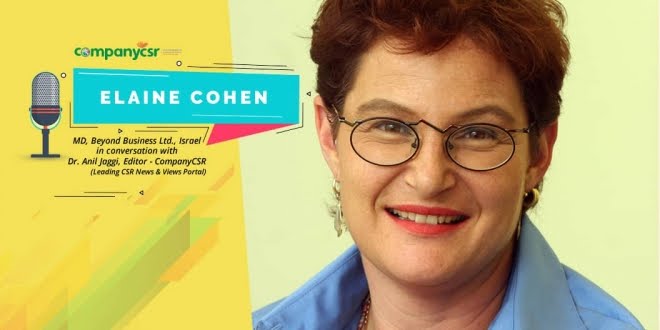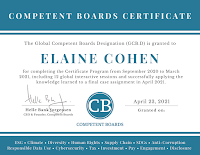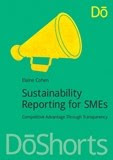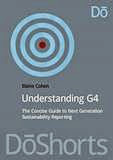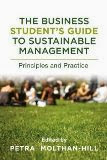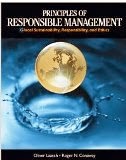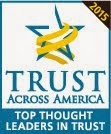The new CEO of GRI, Eelco van der Enden is popping up everywhere these days. Webinars, round tables, conferences, colloquiums. And now he is popping up on the CSR Reporting Blog. Of course he is. The CSR Reporting Blog loves GRI (and loves to challenge GRI as well 😁). Eelco obviously has a lot to say on the topic of corporate sustainability disclosure, but then, these days, who doesn’t?!
The current discourse is polarized into two camps: the let’s-live-better camp and the let’s-make-more-money camp. Of course, players in each camp acknowledge the relevance and importance of the other camp (as long as they don’t get too close to the campfire). Some talk about building blocks, some reference interoperability. Some say let’s live better comes before let’s make more money. Some say let’s make more money is necessary to achieve let’s live better. Some say these are equal grounds on the same camp site. Some say they will never be equal. Mervyn King, the South African governance guru, talks about moving from the “current clutter and confusion to a comprehensive global reporting system”. Frankly, the only clutter and confusion at the moment is the weird discourse that’s going on about how to change reporting.
A new, better, fantastic, wonderful reporting system
Everyone seems to think a new era has been ushered in with the development of modern standards, and observers are thrilled with the fact there is momentum, with more exposure drafts to review in these few months than there has been in years. But the reality is that the debate is now about the differences in the new standards and the relative merits of each, rather than about the overall value of better transparency and how it will help safeguard our future. So much so that ERM and Persefone invested time and effort in the production of a report that analyzes the differences between the ISSB, EFRAG and SEC proposals. I mean, where are we? Rather than deploying existing frameworks and standards, the new voices in sustainability reporting are creating new volumes of disclosure and metrics proposals that may have similar cores, but are sufficiently different to require separate reporting considerations, meaning that everyone is now engaged in comparing, contrasting and concluding, rather than in actually improving disclosure. There might be a reasonable endpoint after all of this, but the continued messiness of it all is quite exasperating. Has no-one ever heard of copy/paste?
The let’s-make-more-money camp’s claim to fame is the premise that they know what investors want. Yes, you got it. Make more money. This seems to me to be a fundamental flaw. There are many types of investors, several of whom are looking to make a positive return on investment while aligning with the values of the let’s-live-better camp. I do not believe that a set of standards based solely on financial value creation, that may be influenced by estimated and extrapolated environmental and social factors, is enough to lead investors to decision making that will either deliver better returns or sustainable corporations. Eelco van der Enden often talks about the fact that there are two pillars of corporate reporting – the financial pillar and the impact pillar – and this is a winning concept. He says that each is widely used along fairly consistent lines by the largest companies around the world, and many of the not-so-largest. Eelco asks why we would reinvent the wheel when we have proof of concept? Financial reporting works; sustainability reporting works; taken together, and with ongoing improvements to the existing standards, all the information needed to assess corporate performance and risk is in place, he says. Maybe all we need to do is get better at that, rather than invent new stuff. Eelco told me:
“Thinking you can introduce a new comprehensive reporting system from nothing, I think, is fantasy. We have some very well proven concepts used by basically everyone, so it becomes about convergence and alignment, whether it’s mandatory or not or whether assurance is mandatory or not. But saying what we have all been doing to date is rubbish and now we need to change it all, is not going to lead us to a very good place. I represent a purpose, not a legal entity. This purpose is about reporting facts, not perceptions, for multiple stakeholders, not just investors. In the recent Amazon vote, more than 20% of independent shareholders, including some of the largest investors, voted in favor of greater tax transparency using the voluntary GRI Tax Standard. Other frameworks are using GRI – the WEF Stakeholder Capitalism Metrics use GRI for 17 out of 22 of their metrics. EFRAG is making use of GRI standards with some tweaks, to allow for local regulations, but they are keeping the baseline principles intact. I do not see a need to start all over again. On the other hand, there are proposals for mandatory assurance to put sustainability reporting on an equal footing with financial reporting. I say this is a good thing. If we are serious about the stakeholder-centric model, we must ensure that reported data is robust.”
Christmas Parties with the ISSB
Despite this, GRI has joined hands with ISSB with a Memorandum of Understanding. The ISSB proposals completely bypass anything GRI, other than giving a token nod to the fact that “impact” reporting is somewhere out there on the landscape in the let’s-live-better camp, and may be of interest to someone somewhere. The MOU is hyped as an agreement to create an interconnected approach for sustainability disclosures. What does this really mean? Eelco explains:
“ISSB has an investor lens. But there is not one type of investor, not all of them are only looking at enterprise value creation. IFRS and ISSB appreciate there is a gap on their flank that needs to be covered. With this MOU, they endorse the role GRI has for the other stakeholders which are not in their target group. The symbolic significance of this is important; for the first time, capital markets are expressing themselves in a way that addresses broader needs, and this should be taken note of by investors. It’s definitely a polarizing discussion. Some of the comments we have been hearing include, say, on the one hand, that GRI has sold its soul to capitalism, while on the other hand, the IFRS foundation has taken a sharp turn to the left. The agreement with ISSB is not about the technical aspects – we have a very well-equipped standards division and 25 years’ experience, we will help ISSB if they need help. So, it really comes down to governance. If you believe in the two pillars approach, people will want to see how the balance between the two is being managed, so there will need to be an overarching, aligned governance mechanism that will enable regulators to have sufficient faith in the robustness of this structure and the roles of the players involved. At GRI, we have an extremely robust due process. I personally was on the Technical Committee for the new GRI 207 Tax Standard and I can tell you it was very hard work indeed. We need to get better at the fine art of compromise. Moving ahead, we will see how this convergence works. Focusing on governance rather than technicalities is what will make the difference for regulators.”
My reading of this is that GRI and ISSB will continue to go their different ways, with different objectives, different audiences and different standards. However, rather than being public adversaries, it will be a sort of hands-off co-existence and an occasional joint Christmas Party. Which brings reporters back to where we have always been; a system for financial reporting (including financial-related sustainability topics) and a system for sustainability reporting. Plus ça change… But, in Eelco’s view, that’s not such a bad thing.
GRI – is a 25 year legacy enough?
GRI’s new Universal Standards kick in from January. The reporting burden will be more significant for companies who want to comply in full with GRI Standards. There are more extensive disclosures on governance, human rights, topic disclosures on material topics, and an entire restructure of the General (Universal) Standards, meaning that GRI reporters will have a LOT to do to reshape their disclosures for the next cycle if they want to remain compliant. Given that ISSB and ESRS drafts are now public, coupled with U.S. SEC requirements, reporters have a good idea of the direction of travel. Several companies already bypass GRI and report using SASB and TCFD only. The question will be whether companies will even bother to invest the extra effort to stay with the new GRI Standards, or whether they will simply pick’n’mix, choosing very selectively the individual GRI standards relevant to them, and bypassing the Universal Standards entirely? I wondered what Eelco thought about that. He shared as follows:
“That’s a very good question. It’s more than just about whether the new Universal Standards are more complex or challenging for reporters. It relates to our vision about what the future reporting landscape should look like from an impact as well as a financial standpoint. Yes, it needs effort, the same as every new standard, it will add a burden for organizations because it is different. But the key point is that the Universal Standards are fit for purpose and fit for the future. Five years on from when GRI transitioned from providing guidelines to setting standards, it was time to modernize and renew these disclosure requirements. We have not heard from companies so far that they do not intend to continue to report fully using GRI Standards. But now, of course, there are new options, including the introduction of the ISSB and EFRAG standards. I can only answer fairly if we think about these other initiatives out there. And that’s why we are proposing two pillars. ISSB is based on IFRS international accounting standards. GRI is based on multistakeholder dialogue. Combine these two and you have a system that has been around for more than 20 years. Nearly 11,000 companies use GRI and also report against mandatory financial frameworks. The platform exists. It works. The mandate of the SEC in the U.S. will always be investors, that won’t change. Nothing new from that end. We might see more incorporation of SASB standards into these requirements but the focus will not change.”
That’s an optimistic view. From my perspective, while it tends to make sense, the danger is that new standards may drive companies down to the lowest common denominator i.e., what regulation requires (assuming EU and ISSB standards become law in different jurisdictions around the world). In the absence of regulation, as has mainly been the case so far, voluntary disclosure not only flourished, but it also became a competitive advantage. If your peers use GRI, then you use GRI. In a brave new world where sustainability reporting (of sorts) is mandated, and required to be externally assured, and will carry the same regulatory and legal weight as financial reporting, companies may look to minimize the reporting burden to that which is unavoidable. I think a role of GRI through whatever this transition is will be to truly land the use of GRI Standards as the only way and the right way to provide impact transparency for all stakeholders, both as impact reporting in its own right and as a precursor for additional finance-related disclosures. If only a fraction of everything we have said about the value of sustainability reporting over the past 20 years is true, then ditching GRI for the let’s-make-more-money camp would be tragic. I predict there will be some fallout, and some lack of uptake, but I doubt most companies will do a full U-turn. I think GRI will continue to be the framework of choice for impact disclosure and the basis for effective sustainability disclosure as it affects the financials.
Materiality – mind the gap
So, let’s come back to materiality. Everything comes back to materiality. You all know by now that GRI’s version of impact materiality takes account of the organization’s most significant impacts on the economy, environment, and people, including impacts on their human rights.
Impact materiality is central to GRI’s right to exist. Yet even the widespread use of GRI standards has not led to a consistent, clear, due-process-driven, transparent and verifiable methodology for determining material topics. The number of companies delivering a clear disclosure on how they actually determined material impacts, beyond asking selected (friendly) stakeholders for their multiple choice ticks, is probably less than the number of ice creams you can cram into a petri dish. Trying to work out how a company selected material topics is more often than not like staring down a black hole. There is some attempt to correct future practice in the new Universal Standards, in which the definition of materiality has been updated and there is more extensive guidance on process. But, as this is just guidance, I suspect that’s how companies will continue to treat it. (It’s guidance, let’s ignore it). I put this to Eelco: Why does GRI not bite the bullet and create a standard – not guidance or approach – for the process of developing a list of impact materiality topics? Given its central position in sustainability reporting, I find it baffling that GRI has never been willing to address this. Does it serve GRI’s purpose to deliberately leave this vague and open-ended?
And his reply:
“Yes, I will go back to the Standards Team with this question. I do believe a systems audit approach is needed, but I am not sure that it’s within GRI’s remit to come up with a standard like this. We have never been prescriptive about defining materiality, and there are many possible ways to address this. We do get questions about whether GRI is planning to develop a standard for preparing a materiality assessment. Perhaps this is something we could influence in partnership with other groups who might be better positioned to develop such a standard. This is something for consideration.”
I won’t hold my breath. The entire sustainability reporting proposition rests on how companies define materiality, and our trust in their process requires them to disclose it. I believe GRI is absolutely the best placed organization to develop a process standard such as this. Having companies everywhere using GRI standards without a consistent, auditable methodology for determining materiality is like inviting people to a Scrabble game where each player randomly decides the number of points for each letter. You can add up the scores but they actually mean nothing.
When 5 months is like 50 years
I asked Eelco how he would summarize his first five months at GRI and he replied: “Like 50 years”. That’s understandable. More has happened in the past five months in sustainability reporting than has happened since Adam ate the apple.
I asked Eelco what legacy he wants to leave at GRI.
“I’d like to leave a resilient, financially independent organization that, in the two pillar structure, is the globally accepted pillar for impact reporting.”
And some of the challenges GRI is facing?
“Externally, it’s getting GRI back in the front seat. We were not vocal enough about who we are and what we are all about. It’s very simple. We enable society to have a discussion based on facts, not perceptions, providing free standards as a public good. Internally, we need to increase our efforts to raise funds to help us deliver our purpose and create a stronger financial backbone. There is a lot to do. We need to double the size of the standards division, and generate revenues based on more services we provide. We must continue to recruit quality people who are or can become specialists in standard-setting. Our purpose appeals to people, it’s a fun workplace where everyone can make a difference. We must become more efficient, for example, we are now installing a new ERP which will enable us to get rid of a lot of manual work”.
What is Eelco saying to reporters?
“There are criticisms of sustainability reporting and questions relating to how serious companies are about their environmental, social and governance commitments. I think that’s dangerous. Cynicism kills everything. Business leaders and investors should be very serious about this topic, it’s about helping make the world better for everyone. Short-termism is a problem. We must keep the flame alive and also look at how regulators are dealing with this and how large intragovernmental organizations are getting on board. To achieve public accountability based on comparable data, you need to make an investment. You can’t manage with volunteers. It must be managed professionally. It’s too important. Organizations complaining about the burden of compliance are those who are not transparent. It’s exactly that which builds mistrust. At GRI, we advocate for two pillars of reporting, and we are expert in the impact reporting pillar. We encourage all companies to report their impacts on the economy, society and the environment with the necessary degree of investment and leadership attention to help continue to build trust, build inclusive economies and protect our shared future.”
**********
And a little note from me at the CSR Reporting Blog:
I’d like to thank Eelco for generously spending time with me talking through these issues. We had a fun conversation and Eelco was not thrown by my direct and sometimes provocative questions. I believe the approach is clear. Do better what you do best and keep communication lines open. GRI’s focus is impact reporting, with a proven legacy of doing that best (although still not perfectly😏). All the peripheral noise around what investors need, want and how much data they can usefully integrate into their algorithms is exactly that: noise. I advocate for GRI-based impact reporting as the essential fundamental basis for corporate sustainability disclosure; starting with broad based GRI facilitates disclosure against every other standard and framework, as well as responses to mile-long investor analyst questionnaires.
As usual, this post was written by me independently. No-one in GRI has influenced or requested to influence how I presented this conversation with Eelco. Of course, had they offered me a month’s free supply of ice cream, I might have used a few more superlatives 😁.


